Disclosure: Meeple Mountain received a free copy of this product in exchange for an honest, unbiased review. This review is not intended to be an endorsement.
A long time ago, I used to play a flash game called Bloons Tower Defense. The premise was simple. Balloons would float onto the screen and you’d install various types of monkeys that would throw darts at them in order to pop them. As you progressed through the various levels, not only would the amount of balloons increase, but they would begin arriving progressively faster and faster and eventually you’d wind up with balloons that required more powerful darts in order to pop them. This, of course, necessitated the installment of more powerful and faster monkeys and on and on it would go until you eventually either built up such an amazing balloon popping machine that you could easily handle anything that the game could throw at you, or got overrun with balloons and let too many of them get away, or (as was often the case for me) things would get so ridiculous that your video card would check out and your machine would crash. This was my first ever encounter with a tower defense game; and they quickly grew into a staple of my video game diet.
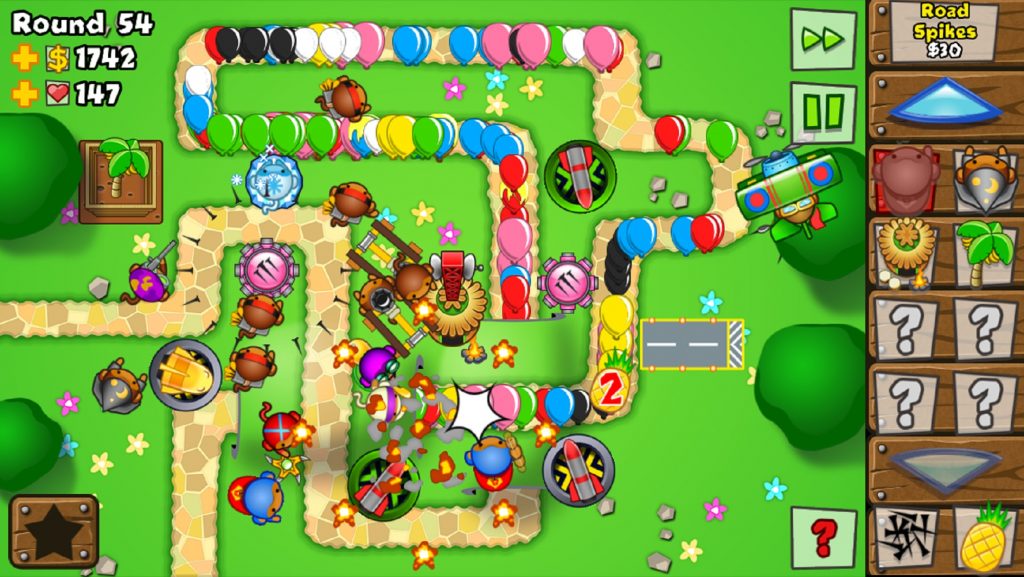
You’d think that with the popularity of tower defense as a video game mechanism it would be the kind of thing that would be explored more often in board games, but it just isn’t. It turns out that it’s hard to implement the sheer amount of chaos, in a more analog format, that those kinds of games generate. Castle Panic gets close, but it isn’t quite the same. Tower defense isn’t about defending a tower. It is all about using towers laid along a path to defend against an onslaught of creatures. One of the staples of any tower defense game is the ability to acquire resources and then use those resources to install new towers and to upgrade the towers that you currently possess in order to make them more powerful… all the while fending off hordes of seemingly never ending baddies that just keep getting stronger.
I’ve long been looking for a board game that could capture that feeling. When I heard about Obelisk, my curiosity was piqued. It’s got all of the elements that make a good tower defense game – resource gathering, towers that start off rather weak but steadily become stronger, portals belching out rivers of demons to fend off, etc. But could they capture that frenetic feeling of barely fending off disaster? There was only one way to find out.
Overview
Obelisk, a purely cooperative game, consists of a small deck of square cards which represent different terrain types (map tiles), a bunch of colored cubes that represent the demons, and the dice that represent the obelisks that are used to ward off and defeat the demons. There are also some player aids cards, turn guides, and such, but the meat of the game is made up of those terrain cards, dice, and demons.
Each round of the game consists of a Night Phase and a Day Phase. During the Night Phase, a specific number of randomly drawn demons (adjusted by your chosen difficulty level) will appear and begin moving across the board, following the arrows pre-printed on the map tiles, where they will hopefully be captured by your obelisks.
During the Day Phase the demons captured by your obelisks will turn to stone which can be used to perform actions such as constructing new obelisks, upgrading old ones, or changing the orientation of the map tiles so that the arrows point in different directions.
If a demon ever runs off of the board or crosses over a tile it has already encountered previously, then you automatically lose the game. Only by eliminating every demon from the game can you and your teammates win.
Day Phase
After setting up your game by randomly arranging the 25 map tiles in a 5 by 5 grid and removing all of the mountains, you will seed your monster pool with a certain number of each colored cube (yellow, green, and blue) according to your selected difficulty level. Then the first Day Phase begins.

In the Day Phase, each player will have a certain number of actions (determined by player count) that they will be able to perform. These actions are:
- Build an obelisk
- Reinforce an obelisk
- Mine petrified demons
- Rotate trail signs (the arrows on the map tiles)
When a player builds an obelisk, they place one of their obelisk dice (of which each player has a limited amount) at the corner of a map tile (preferably where multiple corners converge). These obelisks always begin at a strength of 1 (the single die pip facing upwards). By spending resources (which we’ll get to momentarily), the players can reinforce existing obelisks by increasing the number of pips on their upward facing die faces. The harder to obtain the resource, the fewer will be needed in order to reinforce.
The players will be provided with a few resources at the start of the game, but the bulk of the resources they will be spending are obtained by capturing demons in the Night Phase. In the Day Phase any captured green demons become green resources, yellows become yellow, and blues become blue. Additional green resources may be obtained from mining petrified demons from the quarry.
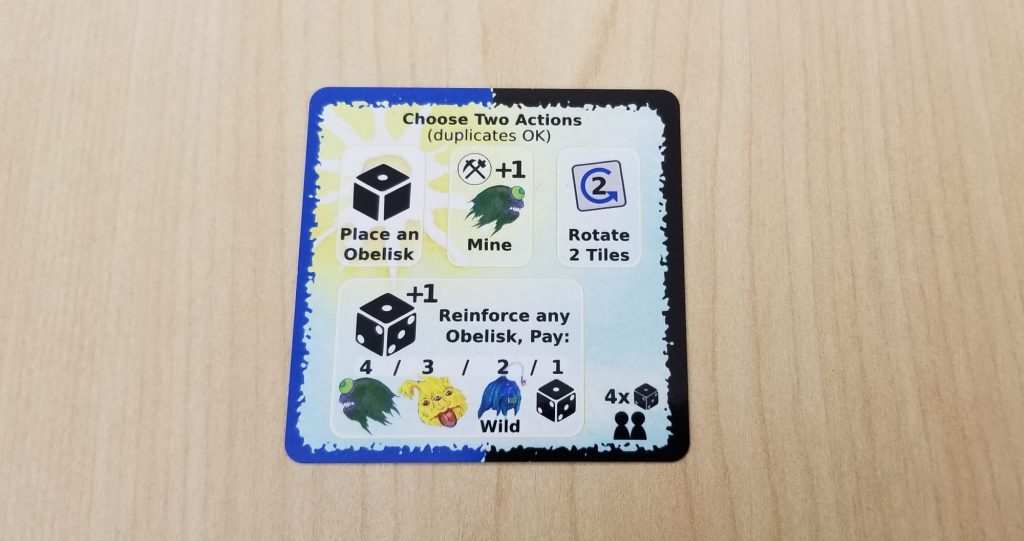
Finally, players may spend one of their actions to rotate a certain number of map tiles (determined by player count) so that the trail signs point in the direction of their choice. Ideally the players will want to create the longest possible path for the demons to follow or direct them down a path where the obelisks can work more efficiently at removing them from the playing area. Once all the players have performed all of their actions, the Night Phase will begin.
Night Phase
In the Night Phase any monsters on the board will move a number of map tiles equal to their movement, beginning with the monsters furthest away from the portal and working backwards until you eventually arrive at the portal. Then you’ll draw 6 random demons from the demon pool, add them to the portal tile, and then they will move as well. Depending upon where the demons move to, and which obelisks are in the area, you may be able to capture a number of them where they will be held until the Day Phase.
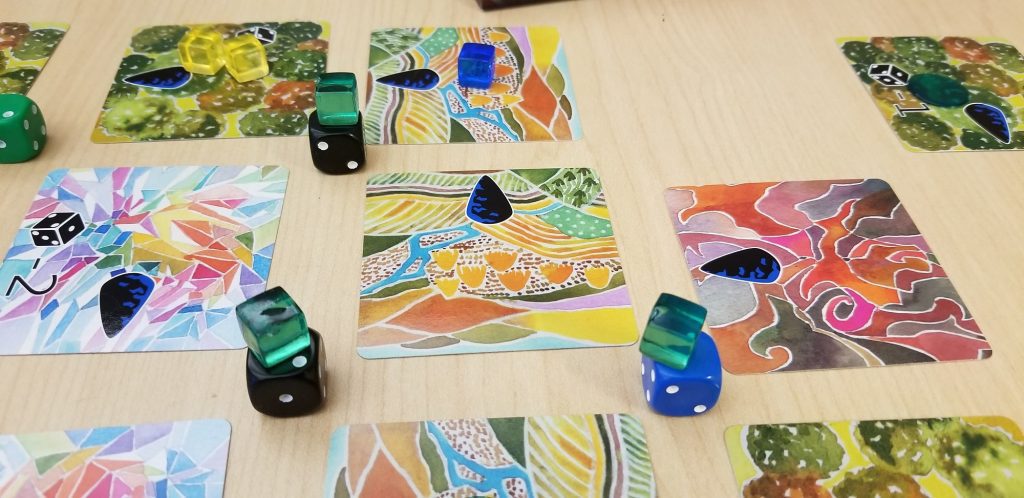
To capture a demon, your obelisk’s strength must be greater than or equal to the demon’s strength coupled with any modifiers provided by the map tile that demon is standing on. For instance, if a yellow demon (who has a base strength of 3) is standing in a forest (which provides a strength penalty of -1), in order to capture the demon, your obelisk must have a strength of at least 4. The penalty provided by the forest tile (-1) would effectively turn your 4 strength obelisk into a 3 strength obelisk which would be just enough to equal the demon’s strength (3). The captured demon would be placed atop the tower that captured it and that tower would not be able to capture anything else for the remainder of the Night Phase. I place emphasis on that clause because towers capture demons in real time as they are moving, not where they eventually end up. Carefully choosing which towers to capture which demons and at what times is critical to your success.
Thoughts
I’m very conflicted about how I feel about Obelisk. Part of me really likes the game and the other part really doesn’t have much desire to ever play it again. When I set up the game that first time, I was hoping that I’d finally encountered a game that really encompassed that feeling that you get from playing a tower defense video game. While it succeeded in some areas, it fell short in others. Maybe it was the game or maybe my expectations were unrealistic.
For starters, I never really felt like I was defending my kingdom against an army of demons. The visuals and the components are far too abstract for that. Consider a game like Kingdomino. In that game (which is also pretty abstract) the artwork really helps to sell the story. The forest looks like it’s comprised of lush trees. The water has boats and fish. Even the desert tiles feature various types of flora and fauna. There’s a lively element to it that gives you the impression that there’s something actually going on. Compare that to the artwork in Obelisk and you can plainly see the difference. This is supposed to be a forest:
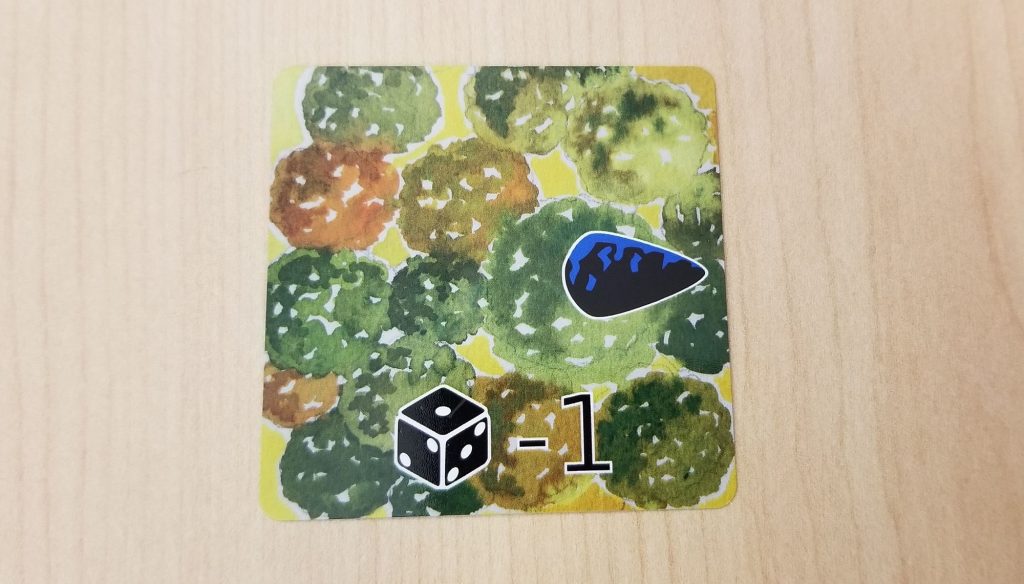
And this is supposed to be a demonic portal:
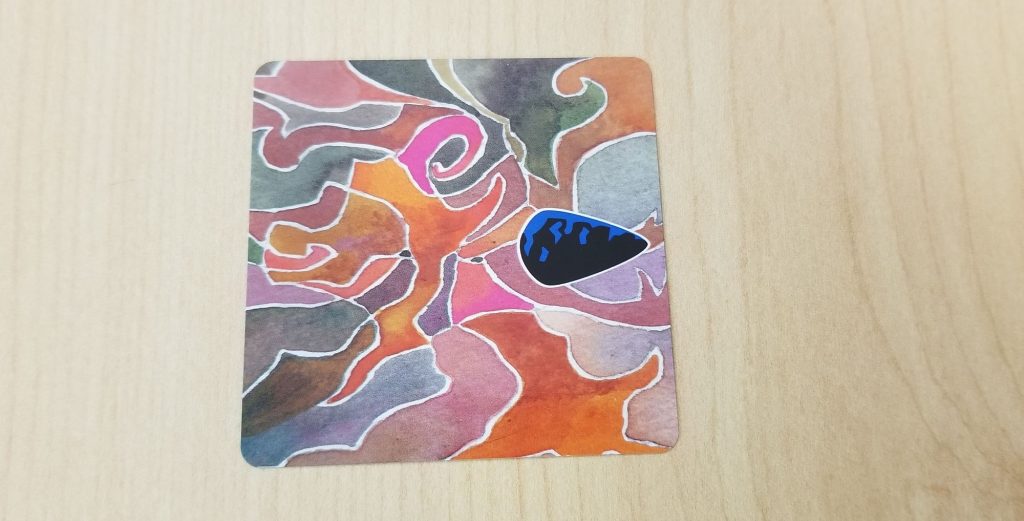
While I can definitely appreciate the aesthetic, it just doesn’t feel like what it’s supposed to represent. That being said, I really do like the artwork. Anca Hariton’s a very talented artist and the map tiles look lovely even if they don’t exactly sell the story. Overall, the game is still very pleasant to look at. This is what I was talking about when I was saying that I felt conflicted.
This sentiment spreads to the game play as well. Part of the joy of cooperative games is being presented with a lot of randomness and then trying to gain control over that randomness. Being able to work together as a team to implement a sound strategy and having your resources in the right places in anticipation of randomness and then actually getting to see all of that groundwork pay off is an amazing feeling. But if the game is TOO random, then you wind up with a game like Ghost Stories that’s so punishing to its players and evinces such a feeling of hopelessness that the game becomes not very fun to play. And Obelisk is awfully close to that danger zone.
Each round of the game, you’ll be drawing random demon cubes from a box and placing them onto the demon portals. If you get lucky, you’ll draw cubes that your towers are well-equipped to defend against. If you’re unlucky, though, you’ll draw nothing but yellow cubes and you’ll get overrun before you know it… and this happens all the time.
“So, why not spend more time upgrading your obelisks?” you might ask. The answer to that question is part of the problem. In each round, each player only has a few actions they can perform and, with the exception of solo and two-player games, these actions can only be performed one time each per player. Building an obelisk uses up an action. Upgrading that obelisk costs yet another action and it also costs resources to do so… resources that can only be obtained by successfully capturing demons with your obelisks. If you’re overrun right off the bat by demons that are too powerful for you to capture, then you might as well quit playing the game. The combination of the restriction on repeating actions and the high resource costs have already ensured your doom right from the start.

There are two saving graces and if it weren’t for these two things, I would be warning you away from this game. The first saving grace is that you can custom tailor the difficulty. If getting overrun by yellows leaves a bad taste in your mouth, you can simply put fewer yellows in the box before the game begins. Giving the players the ability to customize the difficulty to a level that suits them was a very smart call. It is the only reason that I continue playing this game. Without it Obelisk would be so insanely hard that it wouldn’t be any fun to play.
The second saving grace is the included mini-expansion The Scrolls. When added to the base game, these scrolls will give your obelisks additional functionality such as giving them temporary power boosts or further range.
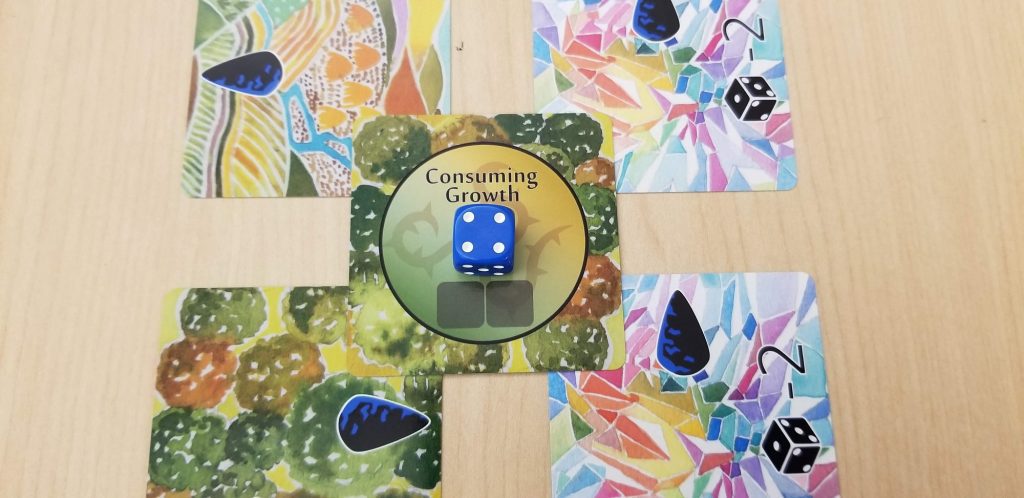
This expansion is such a game changer that I would recommend you never, ever play without it. By allowing the players to functionally change the very nature of the obelisks, this expansion provides a level of control that the game desperately needs. In fact, I don’t understand why this is even considered an expansion. It should just be a part of the base game. In the end, even though I feel conflicted about a lot of things, because of these two saving graces, I have enjoyed playing Obelisk far more than I have not enjoyed it. It is because of this that I can honestly say that I think you’ll enjoy it, too… especially if you’re a fan of tower defense.
Obelisk is currently on a crowd sale at The Game Crafter. Go check it out!



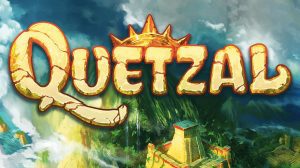







Add Comment